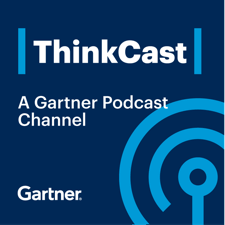Eighty-seven percent of executive leaders expect their investment in sustainability initiatives to increase over the next two years.
- Gartner client? Log in for personalized search results.
Sustainability programs drive value
Business leaders at organizations with sustainability programs in place report a range of benefits. They say sustainability strategies help to protect the enterprise from disruptive impacts and mitigate cost increases — and investing in partnerships and innovation that drive sustainability is an enabler of enterprise growth.
The 2022 Gartner Sustainability Opportunities, Risks and Technologies Survey shows:
86% of business leaders see sustainability as an investment that protects their organization from disruption
Four out of five leaders see sustainability as helping their organization to optimize and reduce costs
83% say their sustainability program activities directly created both short- and long-term value for their organization
Gartner clients: Visit gartner.com for additional insights and tools or to schedule time with an expert.

Climate tops material sustainability issues
Climate is at the top of issues considered material to environmental, social and governance (ESG) sustainability, according to Gartner analysis of 100 organizational materiality assessments. Climate is followed by business ethics and integrity, diversity, equity and inclusion and sustainable products.
Environmental sustainability is rising on CEO agendas, and 9% of CEOs put it among their top 3 business priorities.
74% of supply chain leaders expect circular economy (sustainability) activities to positively impact profitability between now and 2025.
Nearly 70% of surveyed CEOs plan to invest in new sustainable products and in making existing products more sustainable.
The circular economy has had a positive impact on prior-year revenue for 67% of supply chain leaders surveyed.
44% of supply chain leaders expect climate change to create challenges related to security of supply in the next 10 years.
Sources:
- 2022 Gartner CEO and Senior Business Executive Survey
- 2022 Gartner Emerging Priorities in Supply Chain Survey
- 2022 Gartner Circular Economy Survey
Sustainable business — complimentary insights and guidance
Sustainable business — complimentary webinars
At the core of sustainable business strategy lie decisions about growth opportunities, risks and costs, technology and leadership.
When it comes to their strategic ambitions and the level of engagement for their enterprises, executives have many viable sustainable business options. They range from doing the minimum through compliance to pursuing new growth opportunities and differentiating through sustainability. But this is a fast-moving area. Regardless of the approach you choose, it’s imperative to sense and respond to stakeholders’ expectations, regulatory interventions and market shifts. Access to capital, talent, growth and the enterprise license to operate are all at stake.
- Growth opportunities
- Risks and costs
- Technology and innovation
- Leadership
Answer key sustainable business questions with actionable insights from Gartner
What is sustainable business?
A sustainable business seeks to create long-term stakeholder value by factoring social, economic and/or environmental impacts into strategic and operational decisions.
The degree of strategic ambition for sustainable business ranges from doing the minimum through compliance all the way to pursuing new growth opportunities and differentiating through sustainability.
Those sustainable businesses expecting to transform and differentiate will need to identify new market opportunities, inflection points and disruptions, and incorporate their plans and response into strategy.
What is the difference between ESG and sustainability?
ESG (environmental, social and governance) is often used interchangeably with sustainability. But ESG is a measure of performance, while sustainability is an outcome.
ESG measures are used to assess the robustness of a company’s governance mechanisms, and its ability to effectively manage its environmental and social impacts. Incorporating systematic ESG performance data alongside financial analysis gives better insight into the overall and long-term performance of the organization.
The objective of sustainability is to create long-term stakeholder value by factoring social, economic and/or environmental impacts into strategic and operational decisions. ESG provides metrics to gauge what is being done about sustainability.
How does corporate social responsibility (CSR) differ from ESG and sustainable business?
CSR refers to corporate policies and programs that an organization implements to benefit its community — the objective being to improve the organization’s reputation or positively impact the retention and loyalty of employees and consumers.
While organizations can use CSR initiatives to achieve ESG targets, CSR initiatives are typically driven by a team or function that operates independently or from within the HR or corporate affairs functions. Sustainable businesses take a more strategic and integrated approach to taking account of social, economic and/or environmental impacts into value creation strategies.
What is sustainable technology?
Sustainability technology includes:
Environmental technology, such as renewable energy and direct air capture
Social technology, such as human capital management (HCM) and vendor management for responsible sourcing
Reporting and process technologies, such as carbon accounting, that enable ESG reporting
Can digital business drive sustainability outcomes?
Digital business can be used to go beyond sustainability compliance by helping enterprises reach targets and enabling new business models and revenue streams.
Digital business and sustainable business outcomes can feed each other. For example, IoT, and data and analytics can optimize wind turbines, reducing costs (a digital business outcome) and greenhouse gas (GHG) emissions (a sustainability outcome). A mobile app can help customers measure and reduce their GHGs. This improves customer engagement (a digital business outcome) and supports sustainability targets like achieving net-zero emissions. A circular economy platform creates new revenue, a business outcome for both digital business and sustainability.
